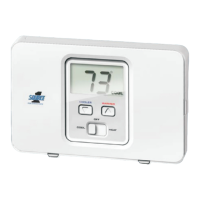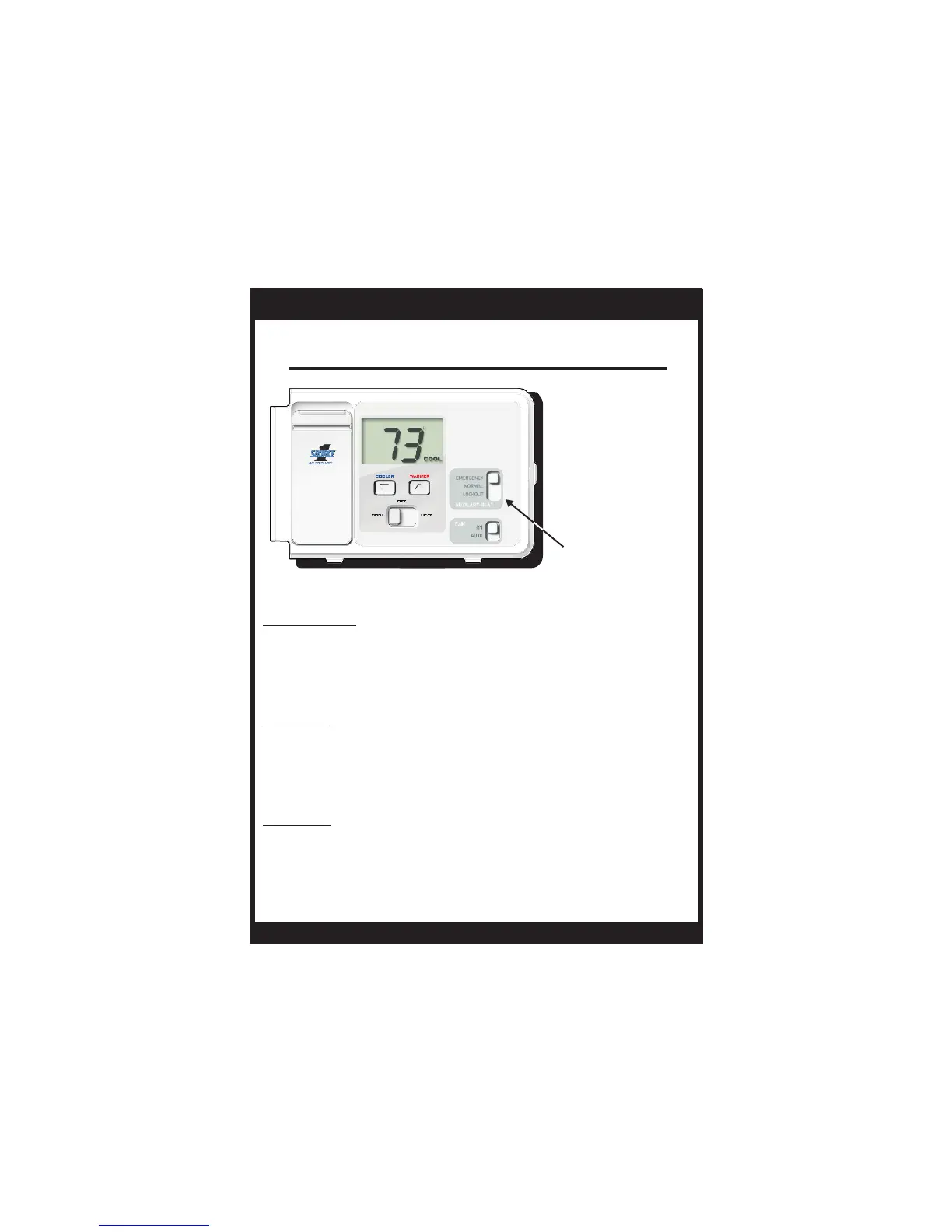Page 7
AUX HEAT
SWITCH
Aux Heat
Normal - Aux Heat is allowed to run, if necessary,
along with the heat pump to satisfy the
heat demand.
Lockout - Aux Heat will never turn on
regardless of the heat demand.
OWNER'S MANUAL
S1-THEH21NS
When the Aux Heat switch is in the Emergency position the compressor will also be
locked out during cooling operation.
*
Emergency - Disables all compressor
functions* and energizes only Aux
Heat to satisfy the heat demand.

